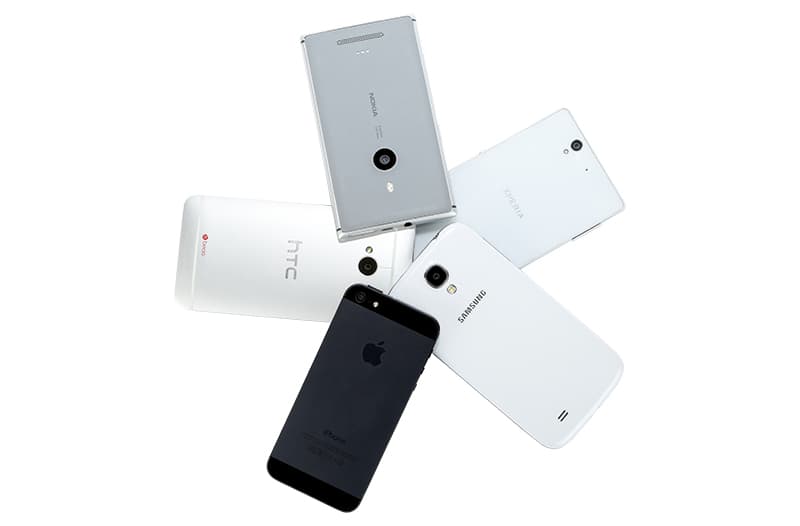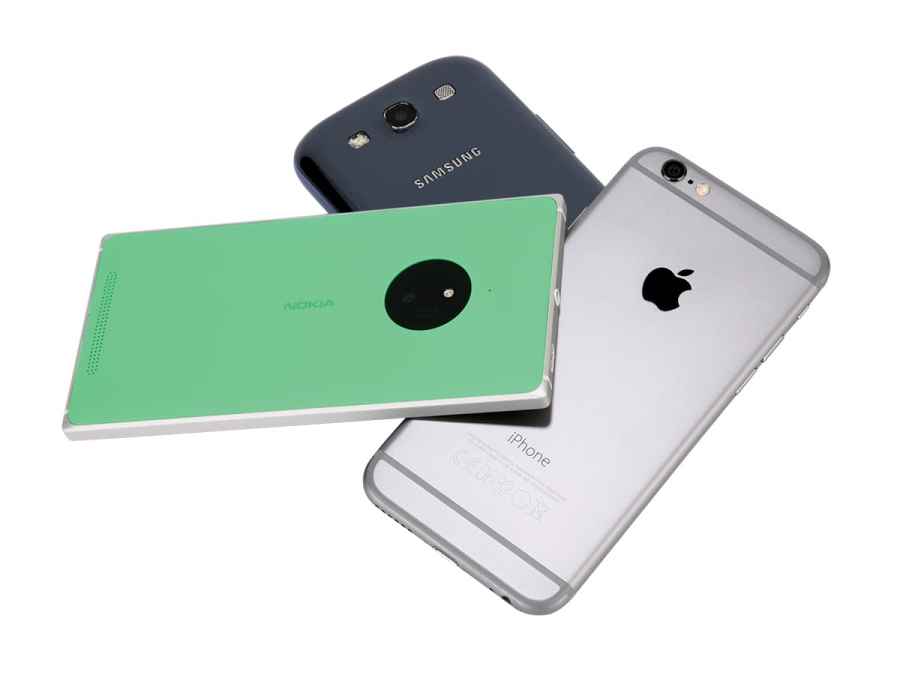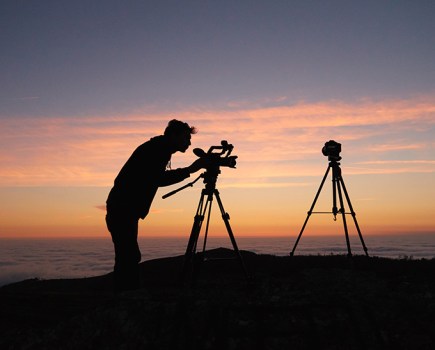Basic point-and-shoot compacts have become largely obsolete thanks to the growth in smartphone ownership. Whereas ten years ago there used be dozens of compacts available for around £100 and under, these days there are very few as camera manufacturers instead concentrate on tempting people away from their smartphone cameras by focusing their efforts on advanced compacts that come with significantly larger sensors, or compacts that come equipped with powerful optical zooms.
And while even the best cameraphones on the market are still no match for a decent advanced compact, compact system camera or DSLR, they have undoubtedly improved considerably over the past few years to the point where image quality is often quite impressive, all things considered.
Given the fact that just about everyone owns a smartphone these days, most people now have a relatively sophisticated camera with them at all times. While this has inevitably led to a tidal wave of narcissistic selfies on social media, there are also plenty of smartphone owners who use their mobiles in much more imaginative ways to capture fantastic images with.
This is reflected by the growing number of creative cameraphone communities – EyeEm and Instagram to name but two – that are dedicated to pushing smartphone photography to its limits. If you want to join in and show off your skills, then you’ll need to equip yourself with a decent phone that allows you as much control as possible over the image capture process.
The main catch when choosing a phone is that most phone contracts last for a minimum of two years, during which time it can be very expensive to change your handset. For that reason, you’ll want to choose wisely and get it right. In this guide, we’ll explain the key things to look out for, as well as how they affect overall image quality. We’ll also look at how you can use apps to enhance your photography and how to keep your captured images safe should you ever be unfortunate enough to lose or irreparably damage your phone.
Sensors

The quality of a cameraphone image has more to do with the sensor than the number of pixels
These days, the physical size of a sensor is generally considered to have a greater bearing on overall image quality than its headline resolution. And while many smartphones are getting larger, the imaging sensors used inside them still remain quite a bit smaller than those found inside most advanced compacts, and considerably smaller than those of Compact System Cameras and DSLRs. This has a number of implications for image quality, as cramming so many pixels onto such a small sensor means the individual light-capturing photosites have to be smaller. This, in turn, can lead to increased noise in low light and a narrower dynamic range.
For smartphone manufacturers working with such small sensors the trick is finding the right balance between headline resolution and individual photosite size. That said, because megapixel counts are much easier to market to the general public than pixel size, many manufacturers – Sony especially – still choose to prioritise headline resolution above all else.
So which cameraphones are equipped with the biggest sensors, then? Well, most flagship models tend to use either 1/3.06in (4.69 x 3.53mm) or slightly larger 1/2.3in (6.30 x 4.72mm) CMOS type sensors. Many of these are manufactured by Sony, with the 13MP IMX214 and 21MP IMX230 Exmor RS sensor variants both proving popular with third-party manufacturers in recent years.
Apple is one company that uses Sony-made sensors inside its handsets, as does Samsung and Motorola. Flagship Microsoft Windows phones such as the Lumia 950 and 950XL both employ 1/2.4in (6.17 x 4.55mm) PureView sensors that were originally developed by Nokia, while less expensive Lumia models are equipped with smaller 1/4in (3.6 x 2.7mm) PureView sensors. The Android-powered Panasonic Lumix CM1 smartphone, meanwhile, employs a much larger 1in sensor – the biggest sensor in any smartphone currently on the market. Rumours abound that Panasonic is to launch a follow-up to the CM1 at some point this year.
Lenses

Most cameraphones simply have a fixed wideangle lens rather than a zoom so that their design can be kept as slim as possible
Because most (although certainly not all) smartphones are designed to be slim and pocket-friendly, it’s all but impossible to equip their built-in cameras with an optical zoom. For this reason, virtually all cameraphones are fitted with a fixed wideangle lens. The precise focal length does vary a bit, but tends to fall between the 35mm equivalent of 24mm and 29mm.
While cameraphones don’t offer any optical zoom capabilities, most do offer some kind of digital zoom. Our advice is to pay little to no attention to this feature. This is because a digital zoom isn’t really a zoom at all; it simply magnifies a central portion of the sensor.
The more you zoom in, the more pixellated the image will become. Some manufacturers claim to employ clever scaling technology, however, we’ve yet to see anything particularly convincing. Basically, when using a cameraphone try to use your feet if you want to get closer and steer clear of the digital zoom altogether if you can.
As regards maximum aperture, most cameraphone lenses fall between f/1.8 and f/2.2. While some smartphones will allow you to change the shutter speed, the aperture is almost always fixed and cannot be manually adjusted – the aforementioned Lumix CM1 and Samsung K Zoom being two exceptions.
If you really want to alter focal length there are a number of companies, such as Olloclip and Manfrotto, that manufacture clip-on lenses that change the cameraphone’s focal length. These tend to be exclusively for use with Apple iPhones and some Samsung Galaxy models though, which isn’t much use if you own a HTC or Sony phone.
Shooting modes
While image quality purists might obsess over sensor size, individual photosite size and the effective resolution of smartphone cameras, for the vast majority of consumers the overall feature-set is far more important. That’s not intended to sound snobbish, rather it’s a reflection of the fact that most smartphone owners are casual photographers as opposed to enthusiasts and, as such, want a flexible and easy-to-use camera that offers a generous range of shooting features that allow them to use the camera in a wide range of situations.
With the demise of basic point-and-shoot compacts smartphone manufacturers have been quick to latch onto this, and most cameraphones now come with a multitude of built-in shooting modes that can be further expanded by the use of downloadable camera apps.
In addition to a fully automatic mode where you need only click the shutter button, most mid-range and flagship cameraphones also offer some kind of Program mode where you can adjust the ISO, White Balance or apply Exposure Compensation. The number of smartphones that offer the type of fully Manual mode you’d expect to find on a DSLR is surprisingly limited however, so don’t expect it to be present automatically – even on flagship models.
In addition to basic and advanced shooting modes, many smartphones are now equipped with a High Dynamic Range (HDR) mode that blends images shot consecutively at high speed and at different exposures in order to enhance the dynamic range. In addition, most cameras have some kind of Panorama mode that allows you to capture ultra-wideangle images of up to 360°.
In terms of autofocus, most cameraphones use contrast-detect AF technology, although a few also come equipped with laser-assist modules to help speed things up and provide additional help in low-light situations where contrast-detect technology traditionally struggles. As well as being able to manually select a specific focus point using your phone’s display, many phones also offer a range of intelligent focusing options such as Face-priority AF or even Smile-detect AF, which is handy if you primarily use your cameraphone in social situations.
While it has yet to debut on the iPhone, Raw capture is starting to creep in on a few high-end Android phones. The Camera2 API that enables Raw capture was actually released by Google around 18 months ago, however, many manufacturers have yet to fully integrate it on their smartphones. For this reason the ability to shoot in Raw doesn’t extend to all Android smartphones running Lollipop 5.0 or higher, which is a shame.
In fact, the list of Android devices that do not support Raw capture is still considerably longer than those that do. Sony, for example, does not offer Raw capture on any of its Xperia smartphones, including the flagship Z5 model. The demand is certainly there though, so hopefully consumer pressure can eventually come to bear.
In the meantime, popular Android smartphones that do support Raw capture include the LG G4, HTC One M9, Google Nexus 6, Lumix CM1 the Samsung Galaxy Note 5 and S6 Edge+ (note that the standard Galaxy S6/S6 Edge does not support Raw capture).
In addition to shooting stills, most smartphone cameras can also be used to record high-definition video. The maximum resolution does vary from model to model, but as a general rule you can expect most flagship models to offer 4K capture, whereas mid-range phones tend to max out at 1080p and cheaper ones at 720p. High-speed still image capture is another growing trend, as this allows you to shoot a sequence of images then comb over them all for the one that best captures the moment, discarding the rest.
Flash
All mid-range and high-end smartphones have a built-in flash, but they tend to not be very powerful. They also tend to be rather inaccurate and often overexpose a subject when used too close.
Thankfully, most phones allow you to turn them off, or offer a dedicated fill-flash mode that’s less powerful, which makes them better suited to shooting portraits. In recent years, more and more smartphones are being fitted with dual-tone flash units, with one flash emitting colder light and another emitting warmer light that’s better suited to skin tones.
Safeguarding your images

Make sure your camera is set to back all photographs up to a cloud service
While most modern flagship smartphones have 32GB of internal storage, regularly shooting hi-res images and especially Hi-Def video will soon fill that memory up. If your camera sports a MicroSD card slot this isn’t necessarily such an issue, but if you lose your phone you might also lose all the precious memories stored inside it. Thankfully, this needn’t be a problem if you sign up to one of the cloud back-up services.
All the major mobile operating systems offer one, with Apple’s iCloud offering 5GB of free storage (upgradable to 50GB for 79p a month), Android’s Google Drive offering 15GB of free storage and Microsoft’s OneDrive offering 15GB of free storage. Better still, virtually all smartphones can be set to upload captured images to the cloud, so if you lose your device you won’t also lose your photos. Make sure yours is set to do so.
Apps
Once you have a smartphone with a great camera, the next step is to fill it with useful photography apps. There are thousands, and they can be used for anything from image processing to turning people into zombies. We’d certainly recommend Pixlr, Snapseed and Adobe Photoshop Express for image editing – the last two can even be used to edit Raw files.
For Lightroom users Adobe Photoshop Lightroom is a must too, as it allows you to sync photos between your desktop Lightroom application and your phone/tablet. If you want greater manual control over your camera, Camera FV-5 and Manual Camera both offer support for Raw capture. For fun single-click filters Retrica is hard to beat, while Instagram and Fotor also offer well-integrated social media features.
All these apps are available for iOS and Android users, though Windows phones lag quite a way behind in the number of apps available.







